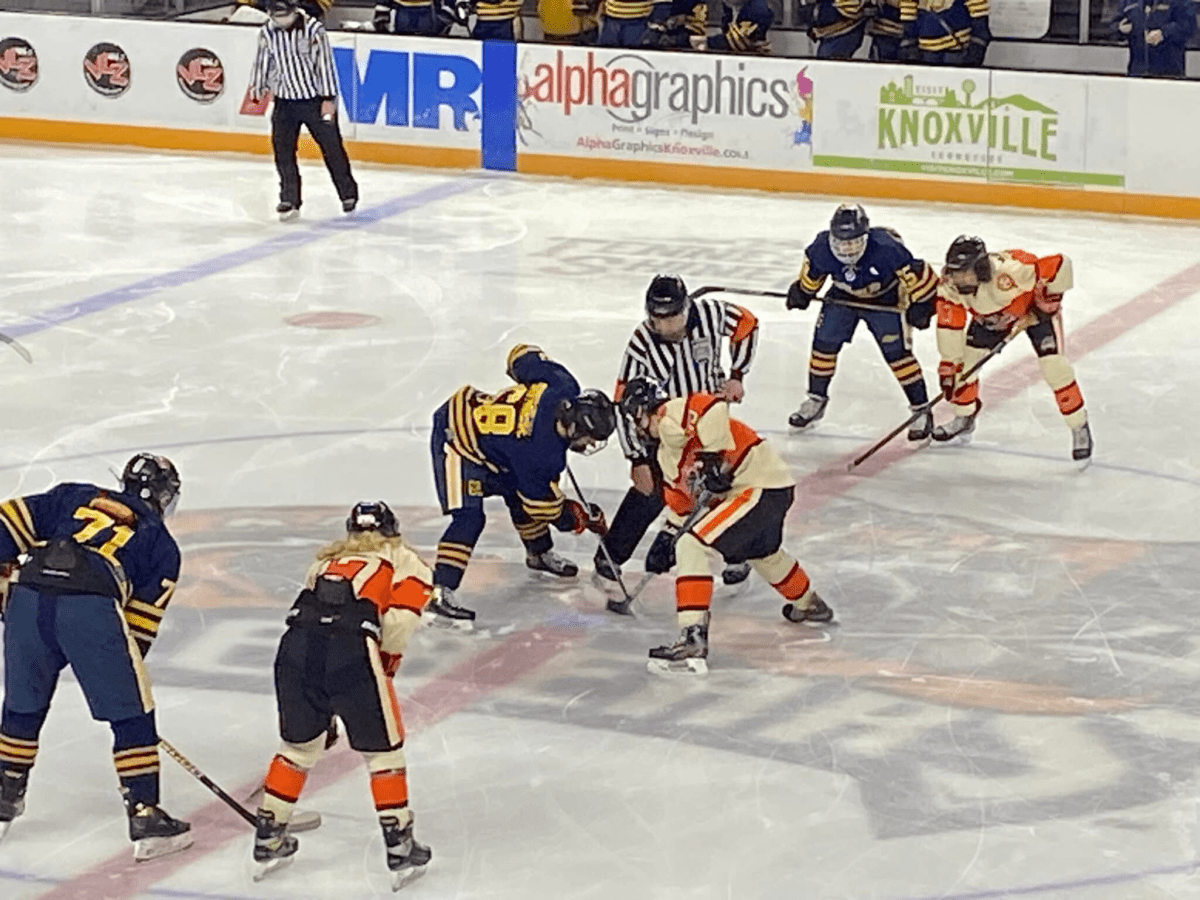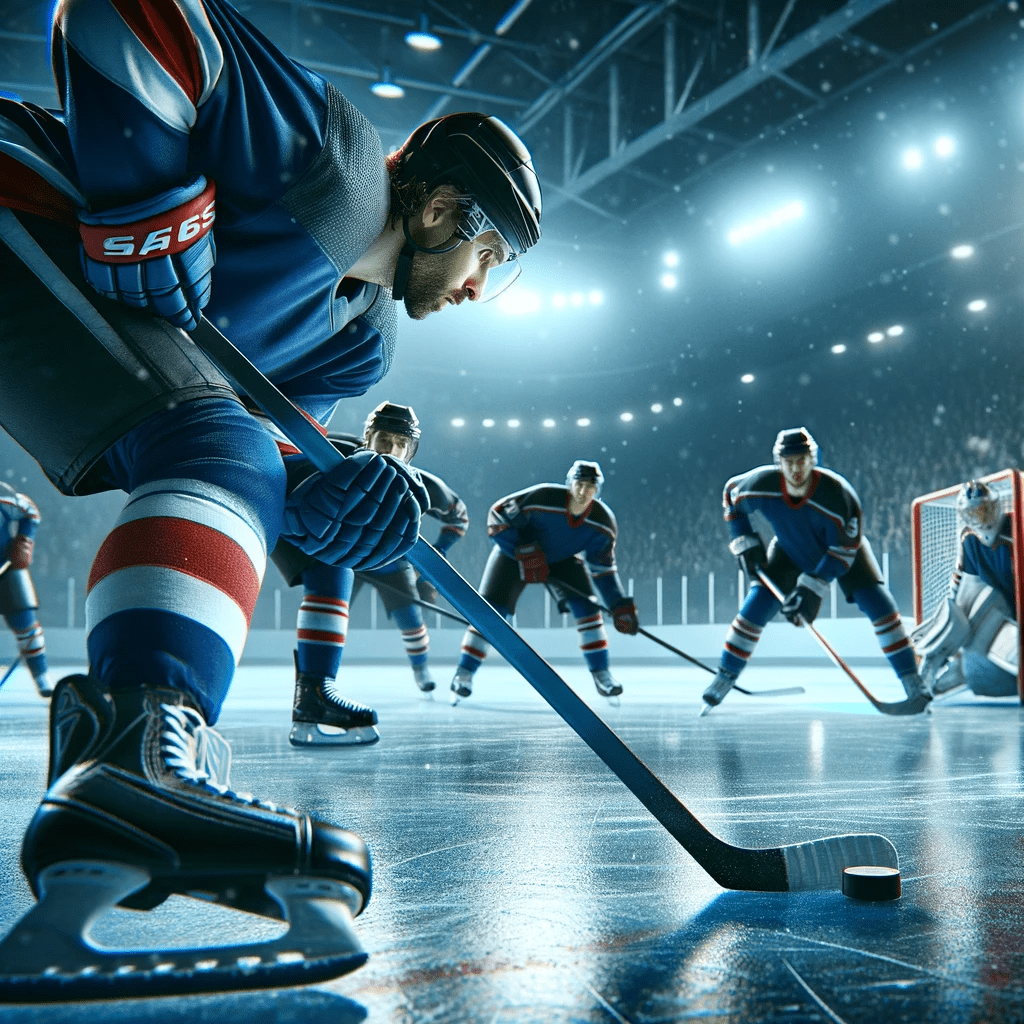What is a Forward in Hockey? Understanding the Role!
What is a Forward in Hockey? A forward is a player who primarily plays in the offensive zone and is responsible for scoring goals and creating scoring opportunities for their team. While forwards may also play a role in the defensive zone, their primary focus is on the offensive end of the ice.
As a parent of a young hockey player and a passionate hockey enthusiast, I know the importance of understanding the various positions on the ice. One of the most crucial roles in the game of ice hockey is that of a forward. In this section, we will explore what it means to be a forward in hockey and gain a deeper understanding of the responsibilities this position entails.
There are three main forward positions in hockey:
- The left wing,
- The right wing, and
- The center.
Each position has its own set of responsibilities, but all share a common goal of contributing to their team’s success. Whether it’s setting up a teammate for a goal or finding the back of the net themselves, forwards play a vital role in the game of hockey.
Understanding the strategies and tactics employed by forwards is crucial for both players and parents alike. By knowing what to look for on the ice and how to effectively contribute, players can excel in their forward position and help their team achieve success.
Key Takeaways:
- Forwards play primarily in the offensive zone and are responsible for scoring goals and creating scoring opportunities for their team.
- The three main forward positions in hockey are left wing, right wing, and center, each with their own specific responsibilities and roles.
- Understanding the strategies and tactics employed by forwards is crucial for both players and parents in order to effectively contribute to their team’s success.
- Forwards play a vital role in the game of hockey and contribute to their team’s success by setting up teammates for goals or finding the back of the net themselves.
- Knowing what to look for on the ice can help players excel in their forward position and achieve success.
The Basics of Being a Forward

As a forward in hockey, players have significant responsibilities in both the offensive and defensive zones. Understanding these roles is crucial to playing effectively as a forward. In this section, I will break down the fundamental responsibilities of forwards and the strategies they employ to contribute to their team’s success. Let’s dive in!
Forward Responsibilities in Hockey
Forwards are responsible for generating scoring opportunities and preventing the opposing team from doing the same. In the offensive zone, forwards work to maintain possession of the puck and create opportunities for shots on goal. They must also be able to anticipate and react quickly to changes in the game, adjusting their positioning and strategies to maximize scoring opportunities.
On the defensive end, forwards have the crucial role of stopping the opposing team from scoring. They must be able to anticipate the opposing team’s moves and react quickly to prevent them from getting close to the goal. Forwards must also be skilled at backchecking, which involves quickly transitioning from an offensive position to a defensive one to prevent the opposing team from getting to the puck first.
How to Play as a Forward in Hockey
Playing as a forward in hockey requires a combination of physical and mental skills. Players must have a strong understanding of the game and be able to think quickly on their feet. They must also be able to skate quickly and have good stamina to keep up with the fast pace of the game.

One of the most important skills for a forward is stickhandling, which involves controlling the puck with the stick while skating. Forwards must also be able to shoot accurately and with power to make the most of scoring opportunities. Another key skill is passing, which involves accurately and quickly moving the puck to teammates to generate scoring chances.
Overall, playing as a forward in hockey requires a combination of physical and mental skills, as well as a deep understanding of the game. By mastering the fundamental responsibilities and strategies of a forward position, players can make significant contributions to their team’s success.
Types of Forwards in Hockey
Forwards play an essential role in hockey, contributing both offensively and defensively to their team’s success. There are different types of forwards, each with unique skills and attributes that make them valuable assets on the ice. Understanding the various types of forwards is crucial for coaches and players alike, as it can help determine the best line combinations and strategies for the game.

- Offensive Forwards: These are the forwards who are responsible for creating scoring opportunities. They are typically fast and skilled, capable of outmaneuvering the opposing team’s defense and finding open space to shoot or pass the puck. Offensive forwards are often the top goal scorers on their teams.
- Defensive Forwards: These are the forwards who focus primarily on defending their team’s goal. They are often physical players who are skilled at blocking shots, disrupting the opposing team’s offensive strategies, and winning faceoffs. Defensive forwards are an essential part of penalty killing units, as they are responsible for preventing the opposing team from scoring during power plays.
- Power Forwards: These are forwards who possess both offensive and defensive skills. They are typically larger and more physical than other forwards, capable of winning battles in the corners and in front of the net. Power forwards often play a more aggressive style of hockey, using their size and strength to create scoring opportunities and intimidate opposing players.
By understanding the different types of forwards in hockey, coaches can create effective line combinations that maximize the strengths of each player. For example, a team may pair a fast offensive forward with a physical power forward to create a dynamic scoring duo. Additionally, understanding the defensive responsibilities of forwards can help players develop their overall game and become more well-rounded hockey players.
The Forward Line
In hockey, the forward line consists of three positions: the left winger, right winger, and the center position. These positions work together cohesively to support the team’s offensive and defensive strategies.

- The left winger plays on the left side of the ice and is responsible for covering the opposing team’s right defensemen. They also work to move the puck up the ice and set up scoring opportunities for their teammates.
- The right winger plays on the right side of the ice and is responsible for covering the opposing team’s left defensemen. They also work to move the puck up the ice and set up scoring opportunities for their teammates.
- The center position plays in the middle of the ice and is responsible for taking faceoffs and distributing the puck to their teammates. They also play a key role in the team’s defensive strategies.
Understanding the specific responsibilities of each position is crucial in creating effective line combinations. A skilled coach will utilize each player’s strengths to create a cohesive and effective forward line.
Key Skills for Forwards
As a forward in hockey, there are several key skills you need to possess to excel in your position. From positioning yourself in front of the net to outmaneuvering the opposing team’s defense, here are some of the specific techniques and strategies that forwards employ:
- Positioning: One of the most crucial skills for a forward is knowing how to position yourself in front of the net. By getting into a prime spot, you can make it easier for your teammates to pass to you and increase your chances of scoring.
- Stickhandling: Another essential skill for forwards is stickhandling. This involves controlling the puck while skating, allowing you to move past opposing players and set up scoring chances for yourself or your teammates.
- Shooting: As a forward, you need to have a strong, accurate shot to be a threat to the opposing team. Practice shooting from various positions on the ice, including from the point, in the slot, and from the boards.
- Checking: While not as important for forwards as it is for defensemen, checking is still a crucial skill to have. By effectively checking opposing players, you can disrupt their play and regain control of the puck for your team.
It’s important to note that different positions require different skill sets.
For example, a center needs to be strong on faceoffs and have excellent passing skills, while a winger needs to have speed and agility to move up and down the ice quickly.
By understanding the unique demands of each position, you can better develop your skills and contribute to your team’s success.
“As a forward, you need to have a strong, accurate shot to be a threat to the opposing team.”
Notable Forwards in the NHL
When it comes to exceptional forwards in the National Hockey League (NHL), two names come to mind – Sidney Crosby and Connor McDavid.
Sidney Crosby, who plays for the Pittsburgh Penguins, is widely regarded as one of the best hockey players of all time. His exceptional skill, speed, and creativity on the ice make him a force to be reckoned with. Crosby’s ability to read the game and make split-second decisions has earned him numerous accolades, including two Olympic gold medals and three Stanley Cups.
| Player | Team | Awards |
|---|---|---|
| Sidney Crosby | Pittsburgh Penguins | 2 Olympic gold medals, 3 Stanley Cups |
| Connor McDavid | Edmonton Oilers | 2 Art Ross Trophies, 1 Hart Memorial Trophy |
Connor McDavid, who plays for the Edmonton Oilers, is another player who has taken the NHL by storm. McDavid’s incredible speed and agility make him one of the most dangerous forwards in the league. In just a few short years, he has already amassed an impressive list of accomplishments, including two Art Ross Trophies and a Hart Memorial Trophy.
“Crosby’s ability to read the game and make split-second decisions has earned him numerous accolades, including two Olympic gold medals and three Stanley Cups.”
Both Crosby and McDavid serve as role models for young hockey players looking to excel in the forward position. Their dedication, hard work, and love for the game have propelled them to the top of the sport.
Power Play and Offensive Strategies
As forwards, one of the most effective ways to create scoring chances is through power plays.
A power play occurs when the opposing team is penalized and one player is sent to the penalty box.
During this time, our team has an advantage with an extra player on the ice, allowing us to execute offensive strategies while leaving the opposing team at a disadvantage.
One key aspect of power plays is creating opportunities in the neutral zone.
This area of the ice is critical for transitioning from defense to offense, allowing us to move the puck up the ice and establish a strong offensive presence. As forwards, we need to work together to outmaneuver opposing players and find open space, creating opportunities for scoring chances.
Positioning is also essential when it comes to executing power plays. As forwards, we need to be aware of the ice hockey positions of all players on the ice, including our own teammates and the opposing team. By finding open space and avoiding opposing players, we can set up successful scoring chances.
In addition to power plays, there are various offensive strategies that we can employ as forwards.
One example is the use of screens in front of the opposing team’s net. By positioning ourselves in front of the net, we can obstruct the opposing goalie’s view of the puck, creating a higher chance of scoring.
Another strategy is the use of quick passing and cycling. This involves passing the puck quickly between teammates to confuse the opposing team’s defense and create scoring opportunities.
Cycling refers to the practice of moving the puck around the offensive zone, allowing forward players to switch positions and find open space for shot opportunities.
Key Takeaways
- Power plays are effective for creating scoring chances and require strong offensive strategies.
- The neutral zone is critical for transitioning from defense to offense.
- Positioning and awareness of opposing players is essential for executing successful offensive strategies.
- Screens, quick passing, and cycling are all effective offensive strategies for forwards.
Conclusion
In conclusion, I hope this article has helped you gain a deeper understanding of the role of a forward in hockey. As a passionate hockey parent and enthusiast, I know how important it is to comprehend the dynamics of different positions on the ice. By understanding the fundamental responsibilities of a forward and the types of forwards in hockey, you can better appreciate the contributions they make to their team’s success.
Knowing the composition of a forward line and the key skills required for success in this role will also provide insights into effective strategies and line combinations. Additionally, exploring the playing styles and contributions of notable forwards like Sidney Crosby and Connor McDavid can inspire and motivate young players.
Lastly, understanding the power play and offensive strategies employed by forwards can help your child thrive in an offensive role on the ice. By finding open spaces and outmaneuvering opposing players in the neutral zone, forwards can create opportunities to set up scoring chances.
Overall, gaining insight into the role of a forward in hockey will contribute to your child’s development in the sport, whether they aspire to play at a professional level or simply enjoy the game. Thank you for taking the time to read this article, and I wish you and your child the best of luck in your hockey journey!
FAQ
What is a forward in hockey?
A forward in hockey is a player who primarily focuses on offensive play and is responsible for scoring goals and creating scoring opportunities for their team.
What are the responsibilities of a forward in hockey?
The responsibilities of a forward in hockey include scoring goals, setting up plays, utilizing speed and skill to outmaneuver opponents, backchecking to prevent opposing team’s advances, and supporting their teammates in both offensive and defensive zones.
What are the different types of forwards in hockey?
There are various types of forwards in hockey, including playmakers who excel at setting up scoring opportunities, snipers who have a natural scoring ability, power forwards who combine size and strength with offensive skills, and two-way forwards who contribute both offensively and defensively.
What are the positions in a forward line?
In a forward line, there are the right winger, left winger, and center position. The right winger typically plays on the right side of the ice, the left winger on the left side, and the center position is responsible for both offensive and defensive duties, playing in the middle of the ice.
What are the key skills required for forwards in hockey?
Key skills for forwards in hockey include skating ability, stickhandling, shooting accuracy, awareness of positioning, anticipation, passing skills, and the ability to read the game and make split-second decisions.
Who are some notable forwards in the NHL?
Some notable forwards in the NHL include Sidney Crosby, known for his exceptional playmaking abilities, and
Connor McDavid, is renowned for his extraordinary speed and offensive skills.
What are power play and offensive strategies for forwards?
Power play and offensive strategies for forwards include creating opportunities in the neutral zone, finding open spaces to set up scoring chances, utilizing teamwork and coordination to outmaneuver opposing players, and taking advantage of open passing lanes and shooting opportunities.



